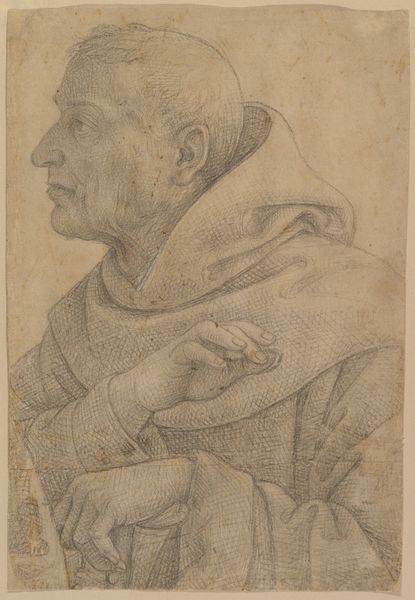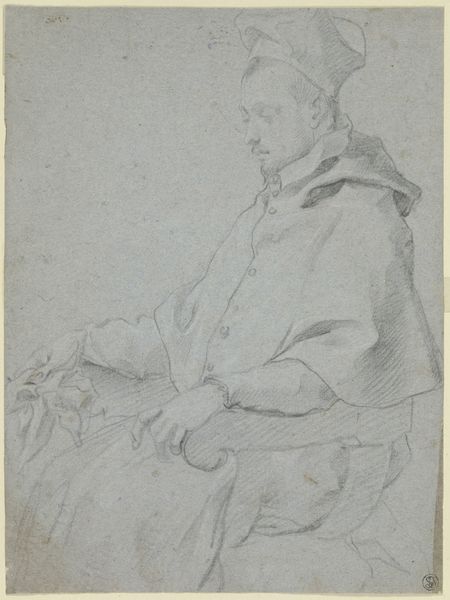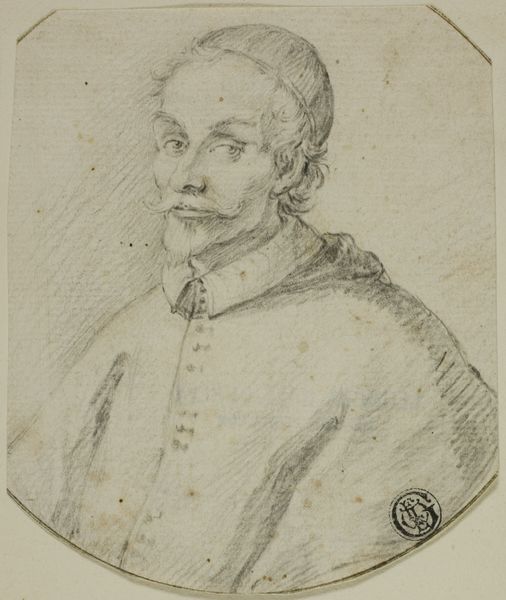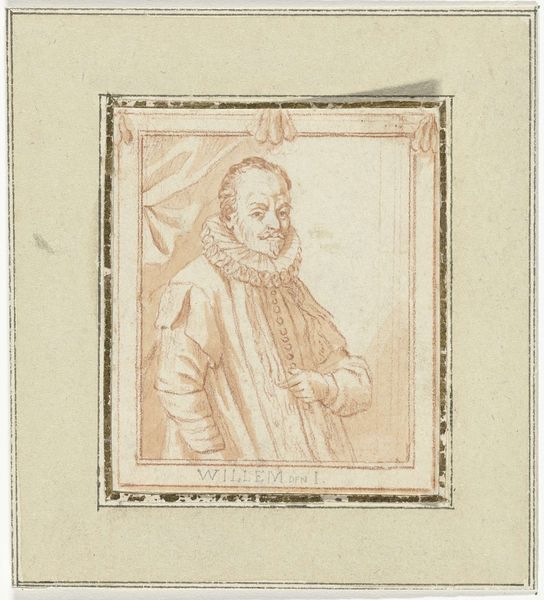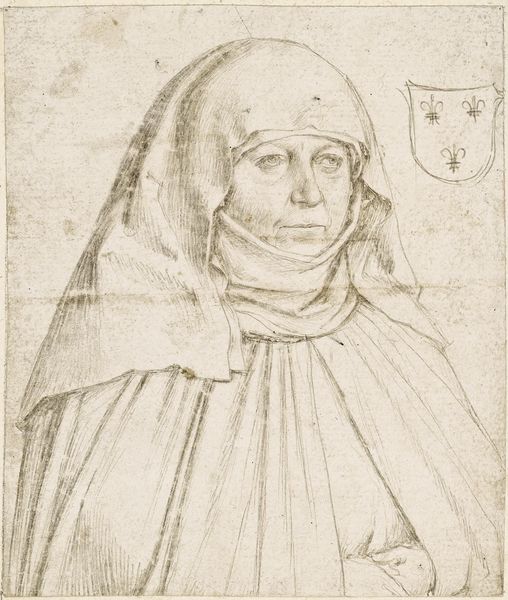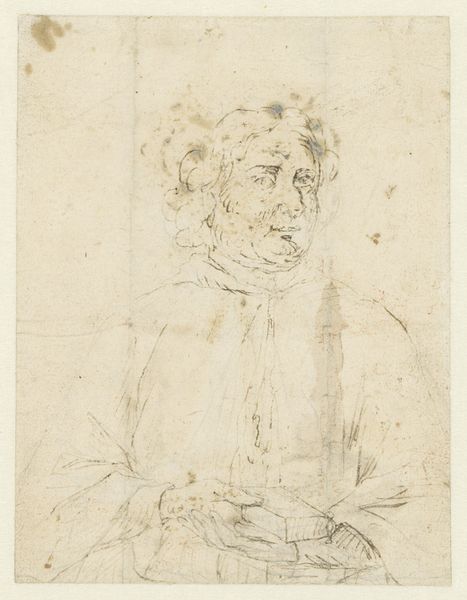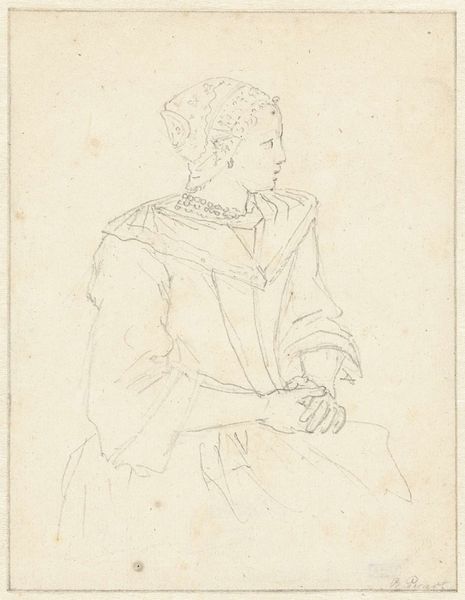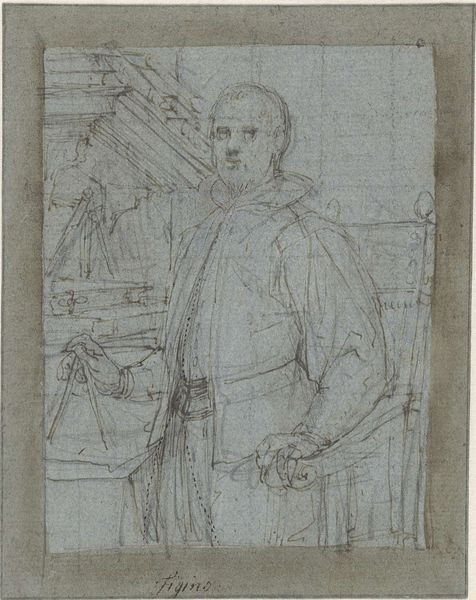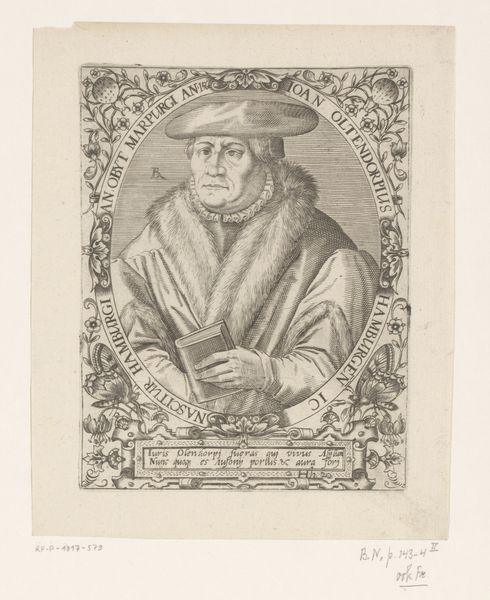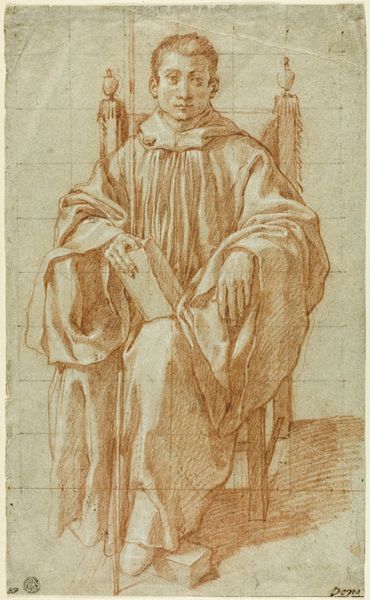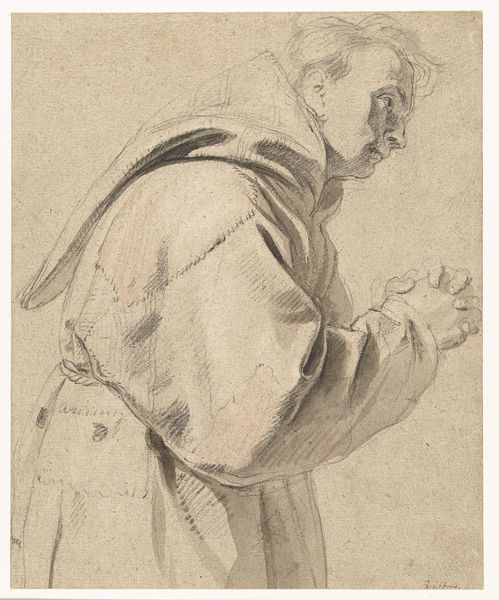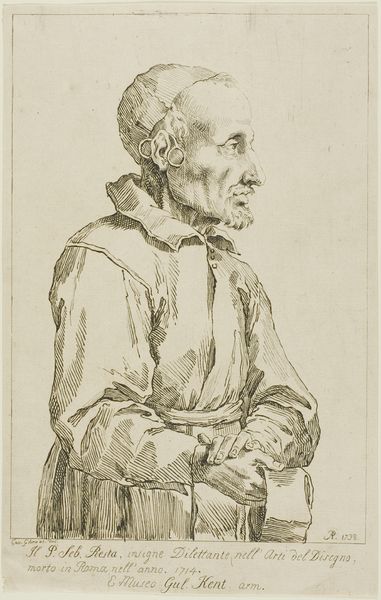
Portret van een zittende vrouw met een stijve plooikraag Possibly 1641 - 1649
0:00
0:00
salomondebray
Rijksmuseum
drawing, pencil
#
portrait
#
drawing
#
dutch-golden-age
#
pencil sketch
#
pencil drawing
#
pencil
#
portrait drawing
#
realism
Dimensions: height 239 mm, width 169 mm
Copyright: Rijks Museum: Open Domain
Editor: Here we have Salomon de Bray's "Portret van een zittende vrouw met een stijve plooikraag", a pencil drawing from around the 1640s, held at the Rijksmuseum. I’m struck by how understated it is, especially compared to the often grand Dutch Golden Age portraits. What jumps out at you? Curator: What I find interesting is the almost casual nature of this portrait in contrast to the socio-political pressures inherent in portraiture of the Dutch Golden Age. Think about who commissioned portraits then. Wealthy merchants, civic leaders… they wanted to project an image of power and piety. Do you see that here? Editor: Not really, it feels very… private. Almost like a sketch done for personal reasons. Curator: Precisely! And that raises a key point: How did this drawing function? Was it a study for a larger painting? Or something else entirely? It's tempting to read it as an intimate portrayal defying the dominant trends but we must consider that the image, however informal to our eye, adheres to conventions of representation for women in the period. See how she sits upright, and note the dress. What might that suggest about her social standing? Editor: Her dress definitely hints at a certain level of wealth, even though the drawing itself isn't flamboyant. Curator: Indeed. So while the sketch's apparent simplicity feels refreshing, we must also acknowledge how societal expectations continue to inform artistic production, even in a seemingly private drawing. Is there any other symbolic context relevant to this drawing, beyond her stiff collar? Editor: Now that you point out the rigid collar, the 'stijve plooikraag', makes me think about the limitations of being a woman. Was this part of how women needed to represent themselves in the Golden Age, maybe reinforcing a more conservative role? Curator: Exactly! De Bray's work shows, whether consciously or unconsciously, how portraiture was always entwined with issues of class, gender and representation within its cultural moment. Editor: I see that. It’s a reminder to look beyond just the aesthetics. Thanks, it really broadened my view of this artwork. Curator: My pleasure! It’s always good to remember that what appears informal can still reveal the powerful structures of society.
Comments
No comments
Be the first to comment and join the conversation on the ultimate creative platform.
